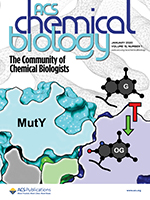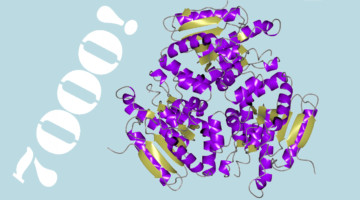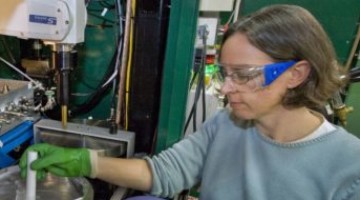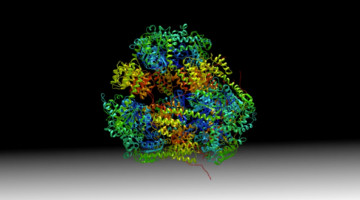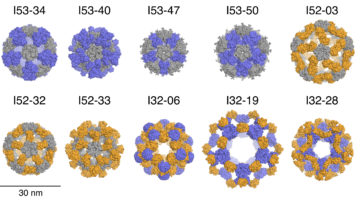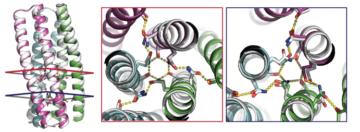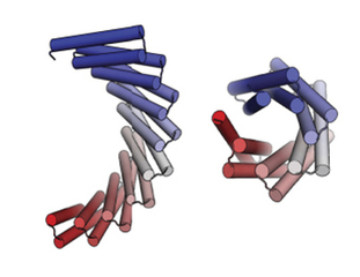Finding OG and avoiding G: DNA repair enzyme MutY distinguishes between undamaged guanine (green) and oxidized guanine when targeting OG:A mispairs. A structural motif within the C-terminal domain (violet) responds to OG to G substitution and appears mechanistically coupled to the adenine removal site (gray) in the N-terminal domain (cyan). Read more »
ALS Passes the 7000-Protein Milestone
The eight structural biology beamlines at the ALS have now collectively deposited over 7000 proteins into the Protein Data Bank (PDB), a worldwide, open-access repository of protein structures. The 7000th ALS protein (entry no. 6C7C) is an enzyme from Mycobacterium ulcerans (strain Agy99), solved with data from Beamline 5.0.2. Read more »
NIH Grant Will Enhance Structural Biology Research Experience for ALS Users
A recently awarded National Institutes of Health (NIH) grant will help integrate existing structural biology resources at the ALS to better serve users. The funds will help establish a centralized collaborative mechanism, called ALS-ENABLE, that will guide users through the most appropriate routes for answering their biological questions. Read more »
A Hollow Pyramid Unlocks Principles of Protein Architecture
Researchers have designed a hollow, pyramid-shaped protein with a controllable cavity size that could be useful in the capture and release of smaller compounds. The tools and techniques developed could be useful in analyzing and optimizing designed protein assemblies and understanding their behavior in solution. Read more »
A Molecular View of Sperm–Egg Fusion
Researchers have uncovered the first interactions between the human sperm and egg—the initial steps in the creation of human life. The discovery lays a foundation to better understand fertilization and could lead to the development of non-hormonal contraceptives. Read more »
Designed Protein Nanocages Inspired by Nature
Inspired by protein molecules observed in nature, researchers have now engineered ten large, 120-subunit, two-component protein complexes. These designed nanomaterials are attractive starting points for new approaches to targeted drug delivery, vaccine design, and bioenergy. Read more »
Molecular Switch Triggers Bacterial Pathogenicity
Using an array of high-powered x-ray imaging techniques at the ALS, scientists have revealed for the first time the molecular steps that turn on bacteria’s pathogenic genes. The study could open up new avenues in the development of drugs to prevent or treat bacterial infection. Read more »![]()
![]()
Validation of Novel Proteins Inspired by Nature
Designed proteins containing hydrogen-bonding modules have been validated by crystallography and SAXS. The ability to design synthetic molecules that combine the specificity of DNA-like binding with protein function opens up huge opportunities for the fields of synthetic biology and materials science. Read more »
Exploring the Repeat-Protein Universe
Researchers have published a landmark study that used both crystallography and SAXS to validate computationally designed structures of novel proteins with repeated motifs. The results show that the protein-folding universe is far larger than realized, opening up a wide array of new possibilities for biomolecular engineering. Read more »![]()
![]()
SIBYLS Beamline Builds on Nobel Research
Often the full impact of a scientific discovery takes decades to realize, during which the research is developed further and adopted by other scientists. Such was the case for the work of biochemist Paul Modrich, one of three recipients of this year’s Nobel Prize in Chemistry. Berkeley Lab’s Advanced Light Source was a core resource Modrich used to build on his earlier work. Read more »
